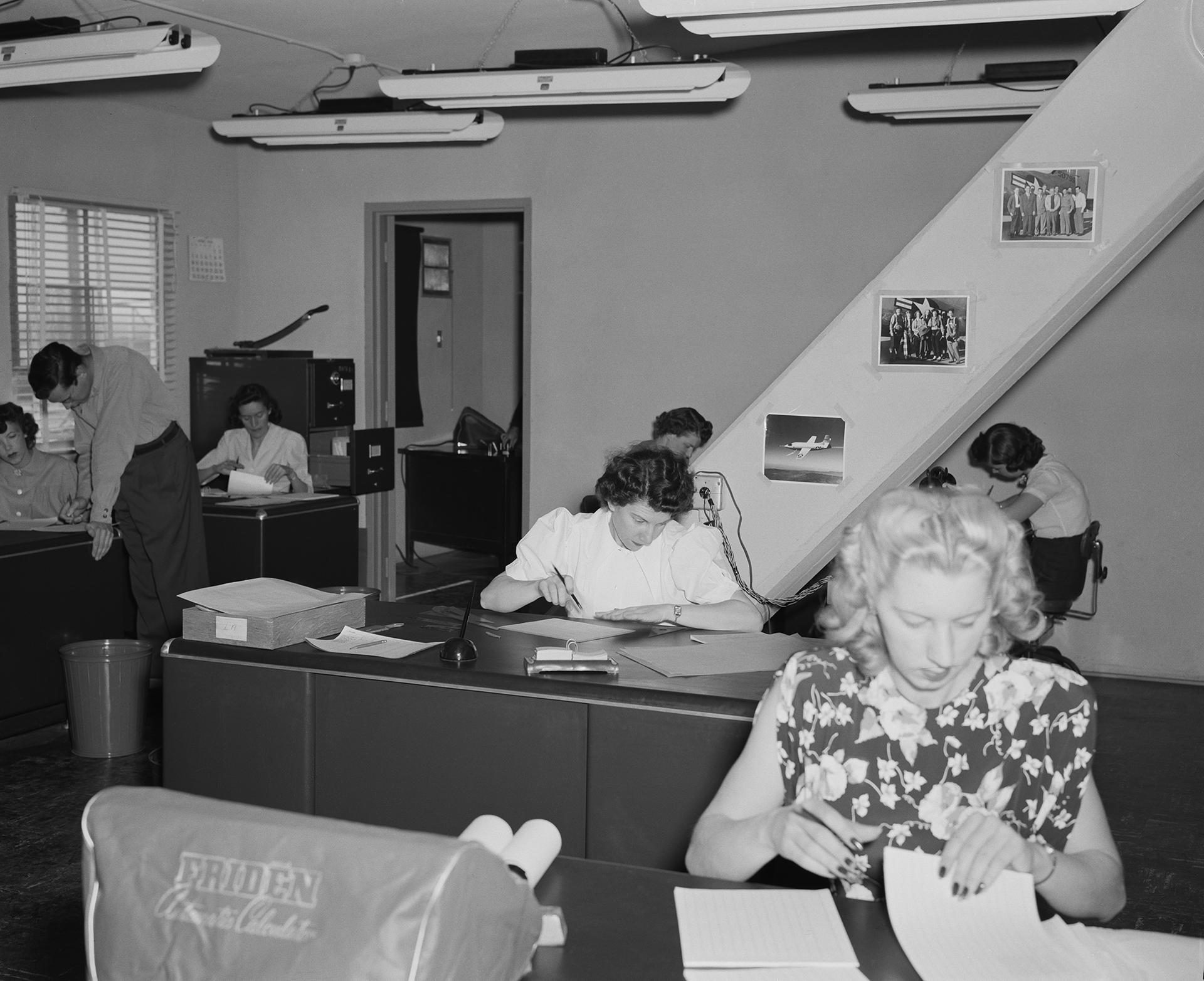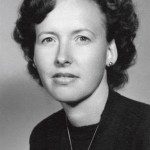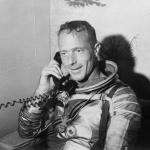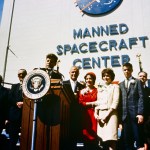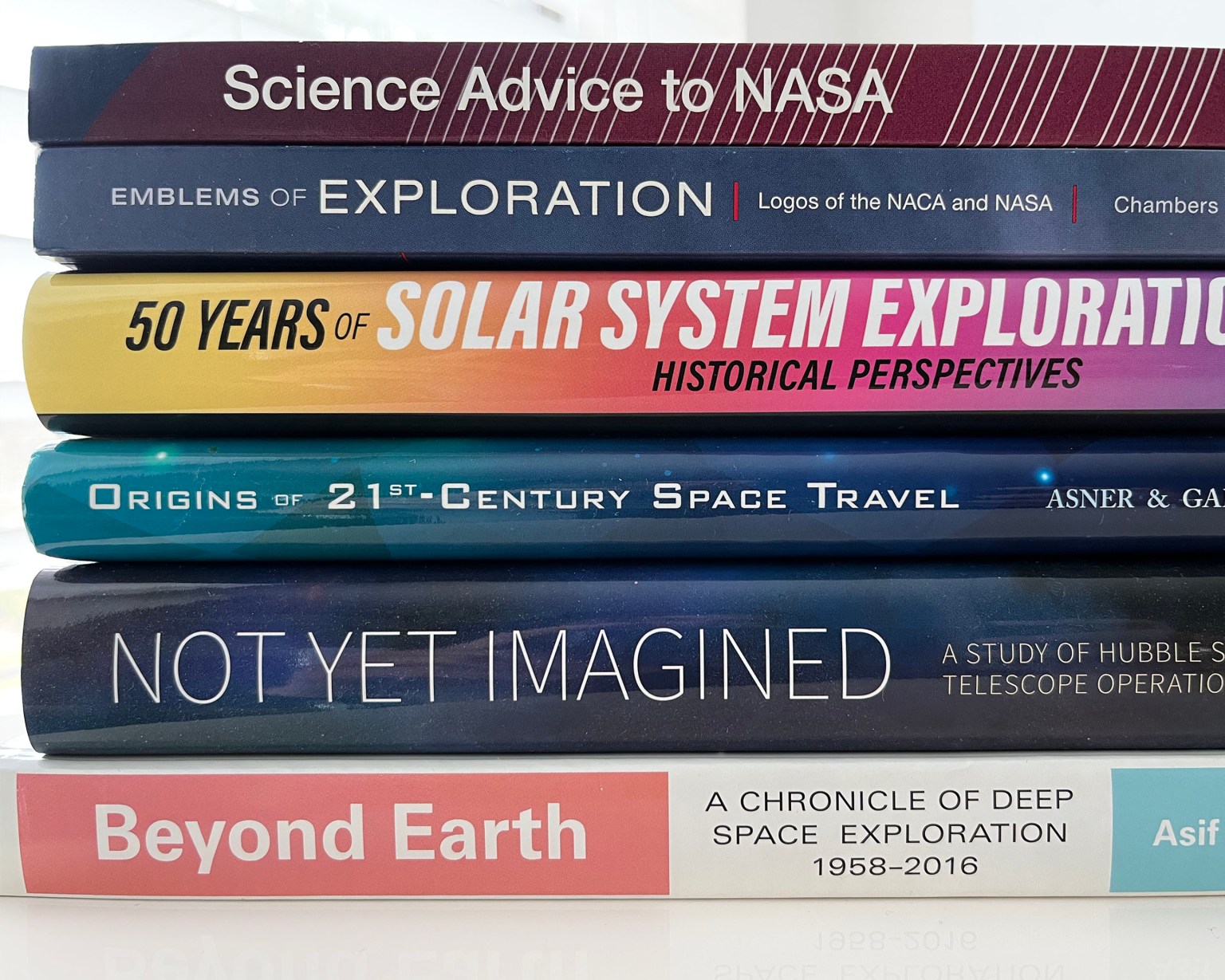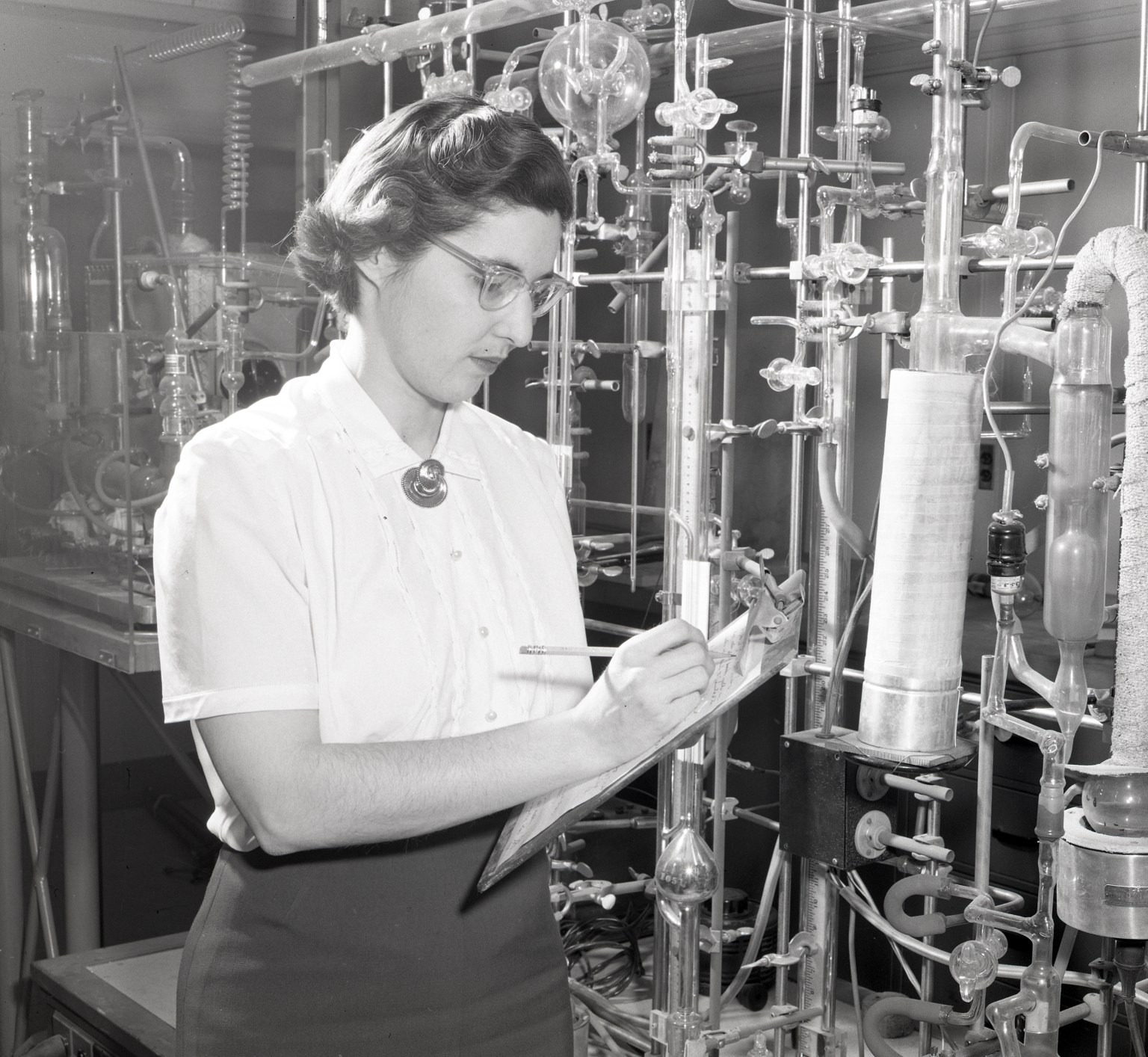Excerpt from an interview with Betty S. Love, by Rebecca Wright
Palmdale, California
6 May 2002
Wright: When did you become associated with the Flight Research Center?
Love: In January of 1952. I had a friend who raised turkeys, but he was also an electronics person, and he worked at [Dryden] FRC [Flight Research Center, California], and he coaxed my husband at that time to go out and get a job because they needed someone with his talent for a position. He went out and applied, interviewed, and was accepted. I was a friend of this fellow’s wife and worked with her in PTA and other school functions. One night we were having dinner, and he said, “Betty, they need computers out there, and you would qualify. Why don’t you go out and get yourself a job?”
I said, “What for?”
He says, “Oh, come on.”
So I went out and interviewed. I think Roxie [Roxanah B. Yancey] interviewed me, who was head of the computers. I didn’t have a math degree, and mathematicians were mostly what they were looking for, but she said, “Well, you’ve had some math, and you’ve got quite a bit of science. We’ll try it.”
I went to work in January of 1952, and [NACA (National Advisory Committee for Aeronautics) was] at the south base, and I was a computer, and computers, of course, reduced data.
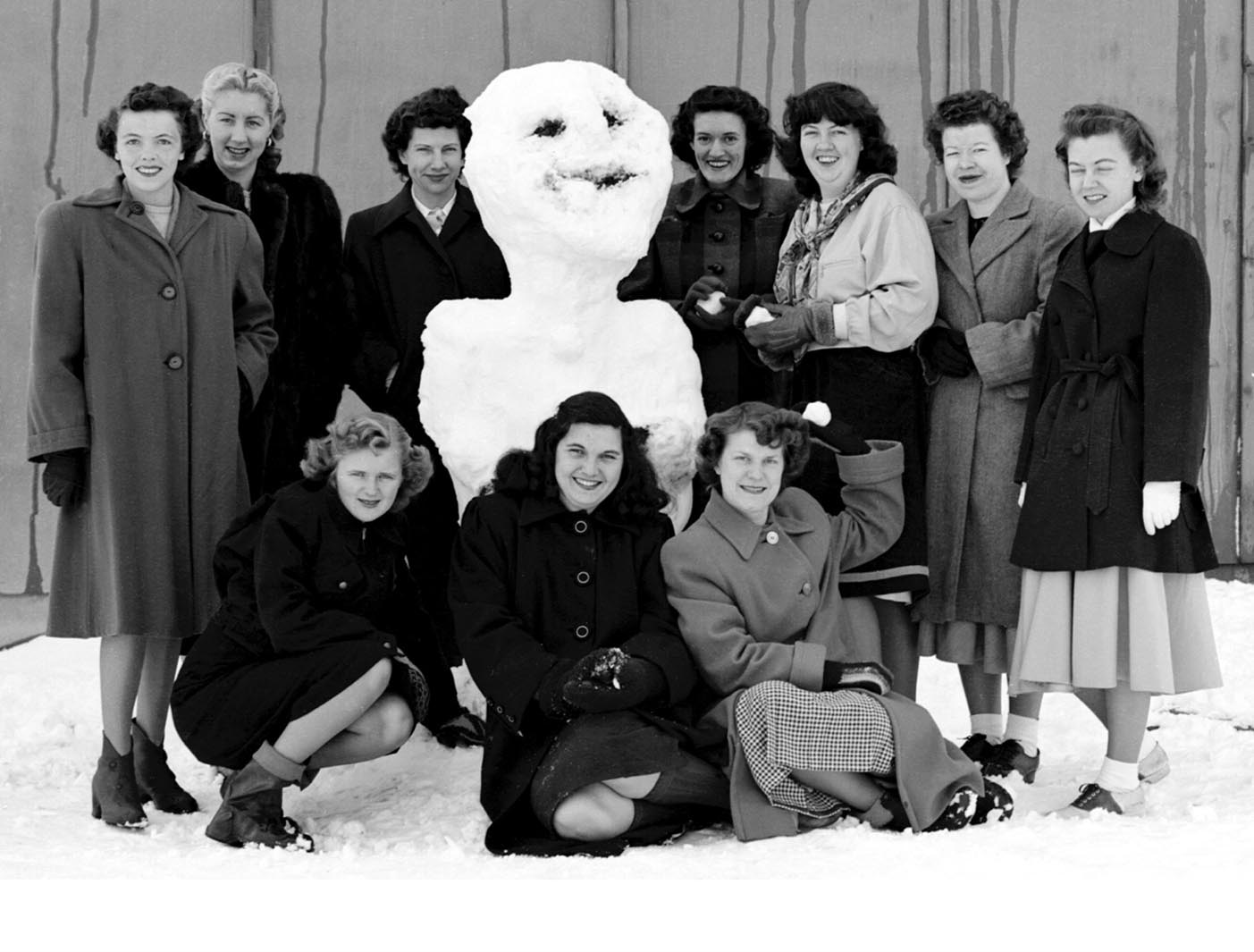
Wright: Tell me about the dress code or the expectations of how women were supposed to act. You mentioned about women just getting along with the men, but were the women allowed in the hangars when the men were working? I know the computers, as you mentioned, were not. But were other women—
Love: No, they were not. In fact, Walt Williams frowned on it. I’m not so sure that, not knowing them and not knowing them socially or anything like that, I have no idea of what their feelings were, as far as women were concerned, but I do know that they felt that women belonged where they were working and they should stay there; there was no need for them to know any part of the mechanical part of it at all. And I noticed in Harriet’s interview about the serving the dinner, and I thought that was cute. I didn’t have to do that either, but I wasn’t asked. [Laughs]
The women just weren’t welcome out in the hangars. I think that both Directors felt that women out there would distract the guys, and the guys wouldn’t get their work done, or their minds would wander, and they wouldn’t be concentrating on the safety of the airplanes and things like that. Yet here again, I found I’d be given a work order and go give it to so-and-so. I went any place and every place. I really did and never thought a thing about it, because I’d been asked to do it, so why not do it? I did, and I knew most everybody. There were some of the fellows in the shops I didn’t know very well because I didn’t happen to come into contact with them. But, yes, I did. I was kind of free rein. I wasn’t kept from any place.
Wright: Did you ever move into wearing slacks or any other casual attire before you left there?
Love: Yes, once. Leta Holleman, who was head of the report section, came in one morning in slacks. She was the first one I had ever seen wear slacks, and she was just darling in them, the way they fit and everything, and it wasn’t a pantsuit of sorts, because she had a pretty blouse on with them. Well, I did a lot of sewing, and I thought, “Hmm.” So I made a skirt and a vest and a pair of pants that all went together, or you could mix and match, and I wore the skirt and the vest quite a bit to work, and one day I mentioned to Leta, “You know, I have a pair of pants that match this, but I don’t think I would wear them to work.”
She said, “Why not?”
So about this time one of the secretaries up front wore a pantsuit to work, and I thought, well, if she can do it, then maybe I could. So I wore the pants. I think I wore them maybe three times, and that was all. [Laughter] But the rest of the Center, after I left, sometime or other, converted, and you saw a lot of pretty pantsuits and things.
Wright: Share with me about how the time worked out at Dryden.
Love: You went to work at seven-thirty in the morning, and when the bell rang at seven-thirty in the morning, you should have been down to the cafeteria, got your coffee, brought it back to your desk. You should be at your desk ready to work. You shouldn’t be walking in from the parking lot. And if you were caught too many times, you were told about it.
And at four o’clock you should be at your desk, putting things away until the bell rang. You shouldn’t be leaving the building before four o’clock. That was get-off time.
Me, if I’d get interested in something, I would forget, and when the bell went off, here my desk would just be full of stuff, and I’d have to put it away. Well, the fellows in my carpool were all working on the first floor. They were mechanics, and one was a model maker, and my husband was in charge of the simulator for the X-15, and they’d all get after me, because I’d come out to the car and they were all ready to go. The engine would be going. If it was cold, the heater was on, and if it was warm, the air conditioning, or the windows were down so the car would be cool. “Betty, can’t you get out here at four o’clock?”
Well, we got a new carpool member, and his name was Neil [A.] Armstrong, and I’d get out to the car before Neil would. So they quite harping at me and started to harp at him, and they were always all over him. “Why can’t you be here at four o’clock so we can leave to go home?” So that took me off of their list but it was expected of you to put in a full day’s work 7:30 A.M. to 4:00 P.M.—and you were expected to take only a half-hour lunch. But the cafeteria was in the building, and you could go down for coffee anytime you wanted, and there was always cookies or cakes, sweet rolls, stuff like that. And during that time period, everyone smoked at their desk anyhow, so there wasn’t any having to go outside like they do now to smoke. But that was so neat. I was always in the hot water because I wasn’t down there in time.
More NASA Oral Histories
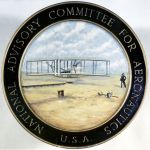
NACA Oral Histories
Oral histories with former NACA members capture the experiences of only a handful of people who worked at the facilities but provide the human story of America’s endeavor to serve as the leader in aeronautical research and the technical innovations that resulted from their labors.
The transcripts available on this site are created from audio-recorded oral history interviews. To preserve the integrity of the audio record, the transcripts are presented with limited revisions and thus reflect the candid conversational style of the oral history format. Brackets and ellipses indicate where the text has been annotated or edited for clarity. Any personal opinions expressed in the interviews should not be considered the official views or opinions of NASA, the NASA History Office, NASA historians, or staff members.
























